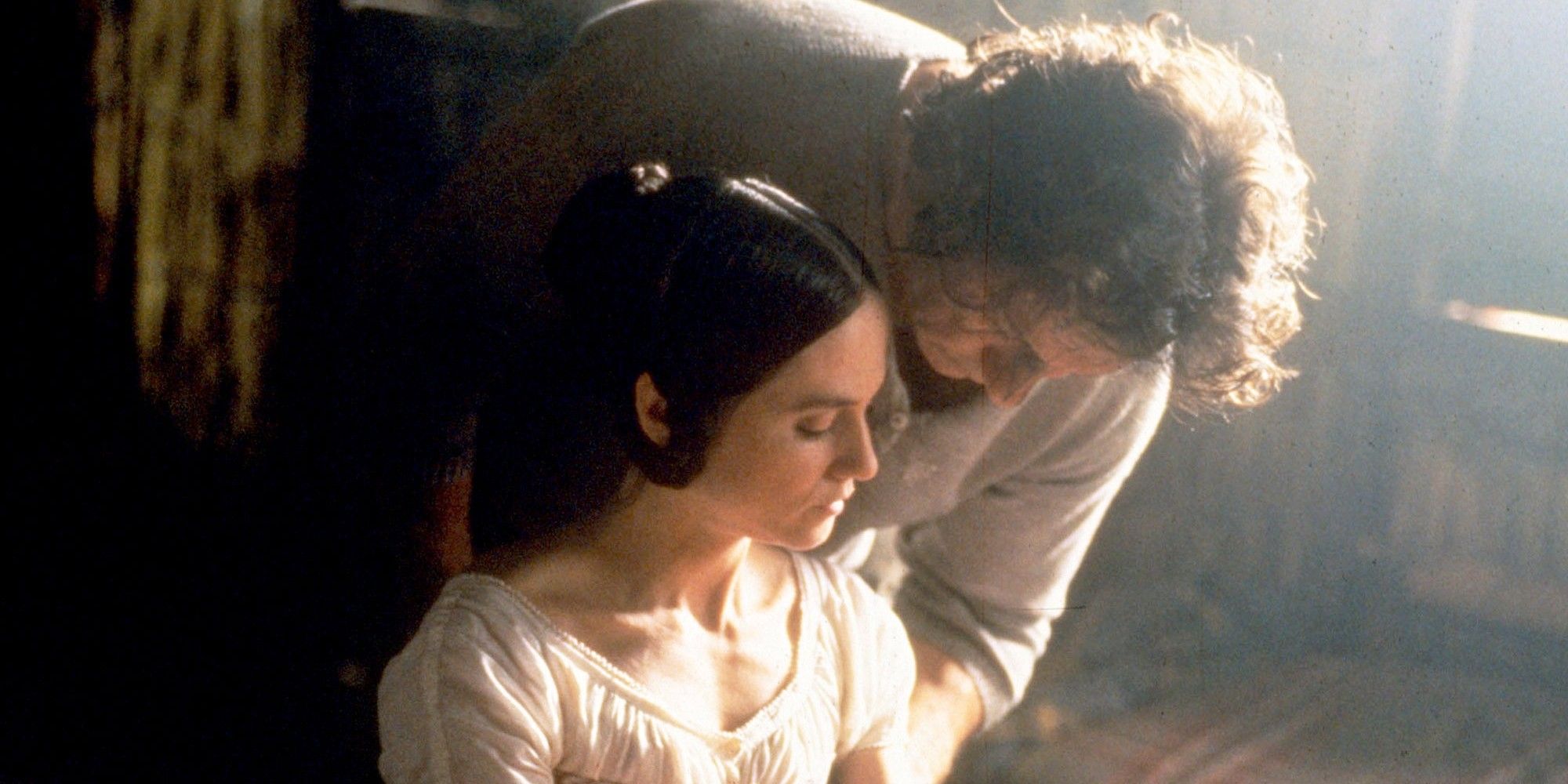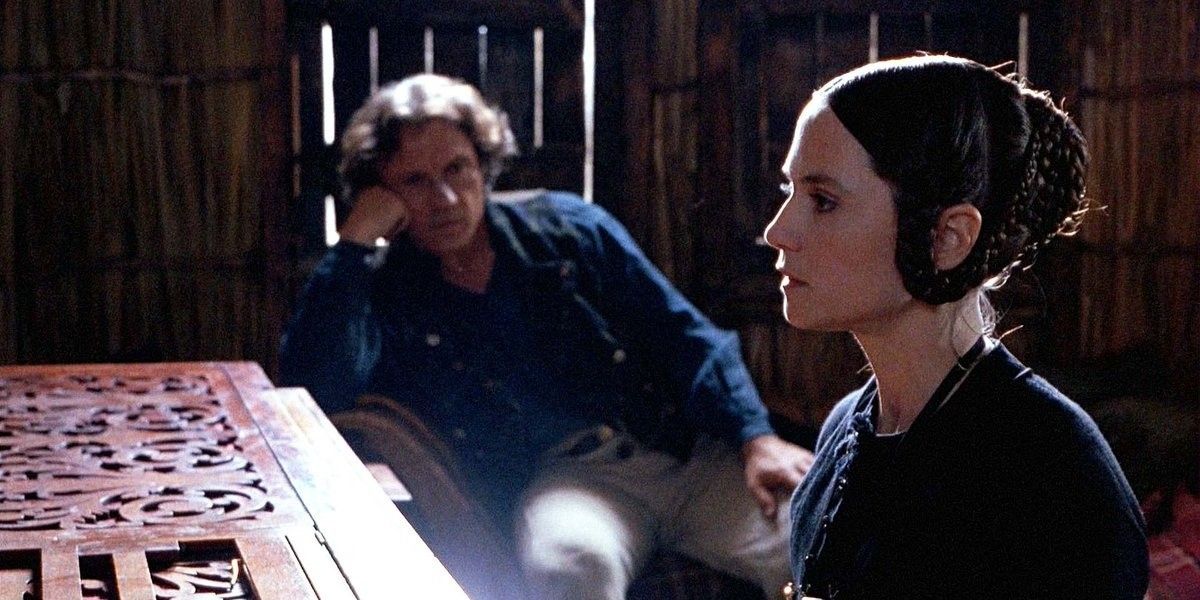The 1993 film The Piano, directed by Jane Campion, is considered an important classic of feminist cinema. It was nominated for many Oscars, won awards for the lead actresses, and has remained an integral milestone in women's filmmaking. However, the film is unfortunately also dated to the time it was made, 1993, in several important ways that have resulted in the picture aging poorly to the modern day. From the film's dated portrayal of gender roles to its awkward portrait of racial relations, The Piano is, sadly, a relic of its time and showcases a few antiquated trends of the 1990s.
The Piano is the tale of a mute woman, Ada McGrath, played by Holly Hunter, who communicates by playing the piano. She and her daughter are sold into marriage in Australia to Sam Neill's Alisdair Stewart, a pioneer who requires a wife; however, he initially makes her leave the piano behind, causing her to be cold to him. His friend George Baines, played by Harvey Keitel, offers to get the piano for her, but for a price -- that of sharing her bed. She agrees and becomes his lover until Alisdair finds out and cuts off her finger in a jealous rage to prevent her from playing the piano again. She and George escape together at the end of the film with her daughter.
How The Piano Reinforces Ugly Sexual Politics
The film's sexual politics are perhaps the most glaringly outdated part of it. Ada is sexually assaulted, blackmailed and harassed by both men in various ways, yet while jealous husband Alisdair is certainly meant to be in the wrong, George's sexual harassment is part of the romance plot between him and Ada. Rather than a powerful exploration of a woman's sexuality, as the film was meant to be, the fact that George begins the sexual affair by blackmailing a woman for sexual favors in exchange for her only means of communication robs it of any romanticism.
The Piano's sexual politics are perhaps accurate to the setting in the 19th century, but the framing of the story creates a problem for the modern-day viewer. Because George is meant to be the romantic lead and the source of Ada's sexual awakening, his bad behavior toward her, which is just as problematic as Alisdair's, has to be excused by the film's script and framing. Ada is very much a pawn between the two men and is often somewhat infantilized by the film due to her lack of speech, characterized as childish and selfish rather than a means of taking control of her own life.
Why The Piano's Portrayal of Indigenous People Is Outdated
Another problem of the story to modern-day viewers is the depiction of the indigenous population in The Piano. While any story set in the 19th-century age of Imperialism that follows European colonizers has the potential to be problematic, the film certainly does nothing to avoid said issues. The indigenous population in the film is never given characterization, names, identity, or a sense of existence except as servants, strangers, or dangerous threats to the white protagonists. The film never questions what the colonizing protagonists are doing in this land of other residents or whether their behavior should be questioned. The native population has little to no agency or identity, leaving the film an uncomfortable watch in the 2020s.
The Piano is one of many 1990s films that feel awkwardly dated by both racial and sexual politics. Many films of the time can confuse women being sexually taken advantage of with sexual liberation, portray disability in an infantilized manner, and show little interest in the lives of nonwhite characters outside of providing support for white protagonists. There are still films like this being made today, but there is some more awareness about the issues inherent in said portrayals in the general public. The Piano is one film out of many that struggle with portraying these ideas, but it is also a film that is credited with success in some of those regards. This creates another angle of the film to examine, a more problematic one than simply being another dated product of another time. These issues in depiction should be acknowledged and dealt with, especially when discussing the film and its place in history.


